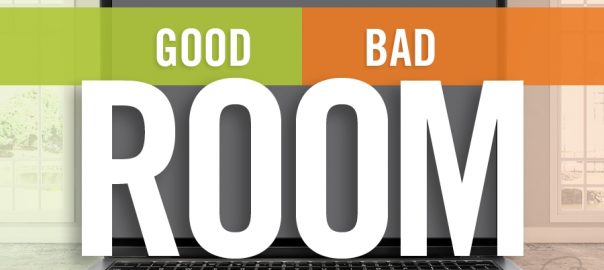
Turns out, training effectiveness scores are impacted by “room quality,” even in a virtual environment.
“Training leaders were refusing to teach in the basement classrooms because their scores were lower versus when they would teach in the top floor classrooms with a view of the city and windows all around. Same content, same instructor, consistently different scores between the two venues.”
This is what we heard from a training leader at a Fortune 100 software company a couple of years back. The environment of the classroom accounted for a measurable swing in perceived class quality.
When the world turned upside down this spring, we (Corporate Visions) went from delivering 120 live, in-person classroom training events to 160 virtual classroom training events every month. And that number keeps climbing as companies continue to pivot and discover the value of scaling training, quickly and efficiently, in a virtual environment.
Not Every Virtual Classroom is the Same
Interestingly, we’ve discovered the same “good room, bad room” impact on training experience scores between different web platforms as the company above noted when they compared physical classroom space.
I’m not going to name names here, but it is interesting to see the discrepancy.
Corporate Visions is actively delivering training on 6-10 different virtual meeting platforms. And over the last three months, we’ve measured class scores across these various web conferencing tools.
One of the key performance indicators is how the participants rate the instructor and the event on a scale of 1-5, where four means “better than most” and five equals “best ever.”
When we look at instructor scores across the various platforms, they remain consistent, around 4.9, regardless of what web conference platform was used. But when we compare overall class ratings, there’s a significant difference.
One web conference tool is driving 99 percent fours and fives, while the others average around 90 percent. Same courses. Same instructors. And a 10 percent drop in ratings. The only difference is the platform.
Does this mean that instructors will soon be saying they don’t want to work on certain virtual platforms because their course scores will go down? It’s worth thinking about.
By the way, the top-performing online platform has consistently driven higher course scores than we measured with traditional, live in-person classrooms (99 to 94). Just one more indicator that virtual training can be better than live.
Business & Finance Articles on Business 2 Community
(53)
Report Post






